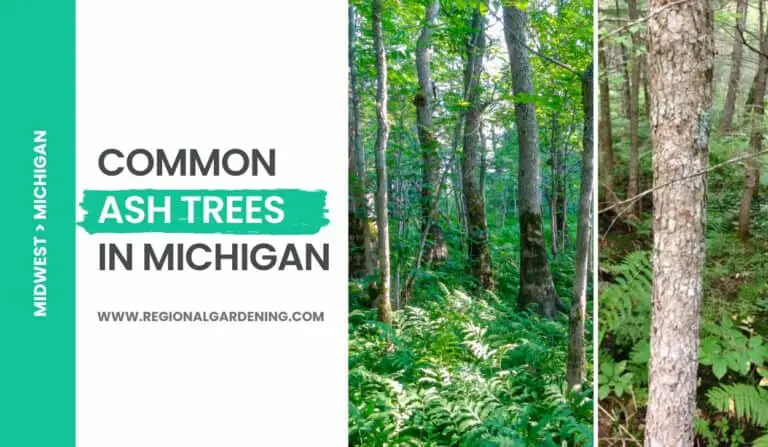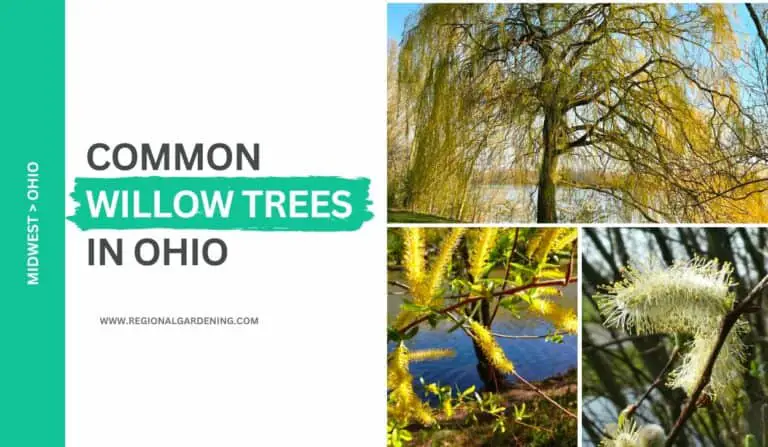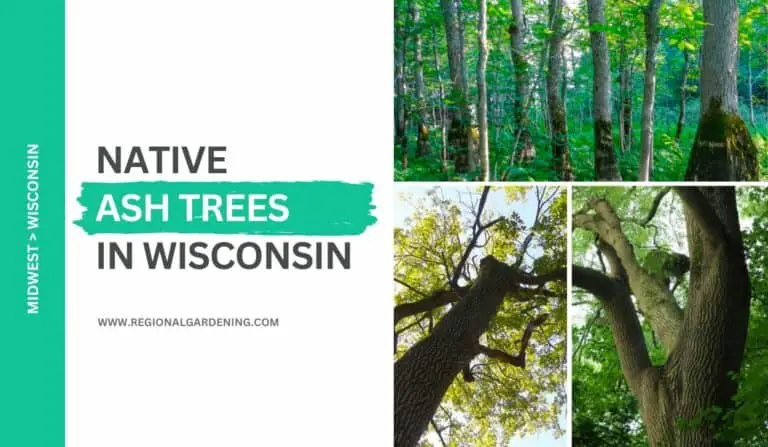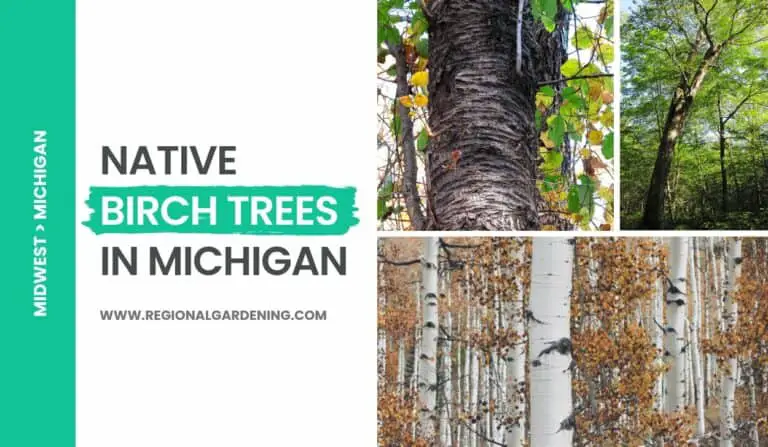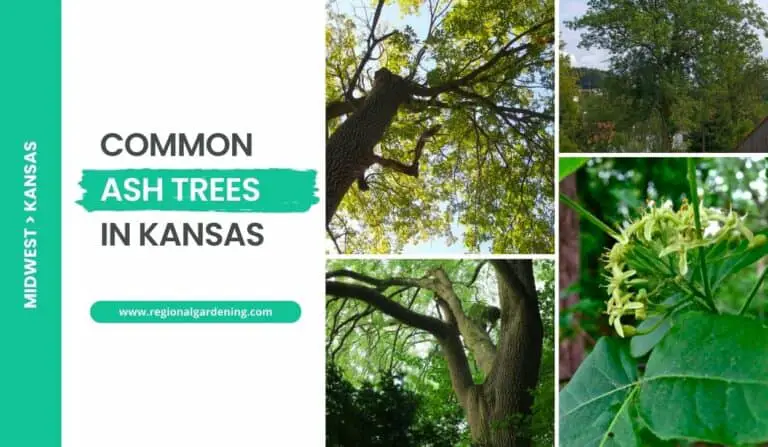2 Types Of Cedar Trees In Ohio (Photos & Identification)
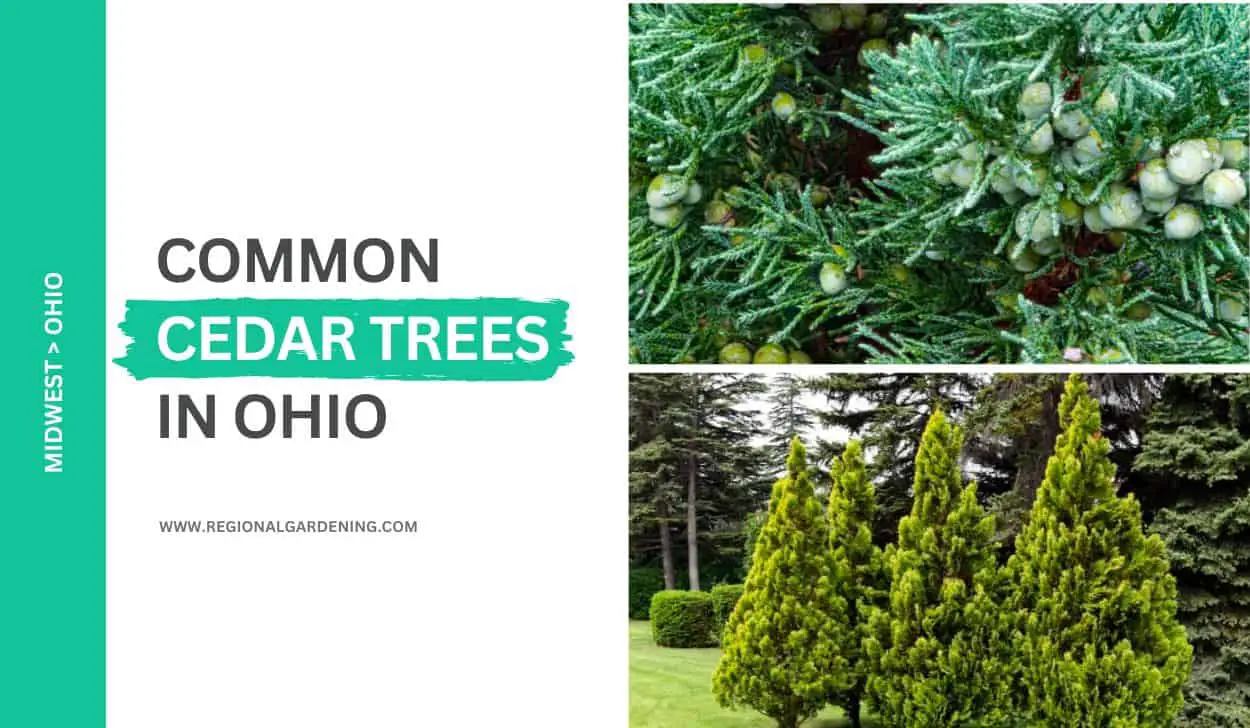
Cedar trees are one of the most common coniferous trees found not only in Ohio, but throughout the United States. And I’m sure you’ve seen plenty of them in your neighborhood or in nearby forests.
Have you ever wondered whether they are all the same or different? Well, the state of Ohio has two different cedar trees. And, despite being a common sight, both of these species are not native to the state.
In this article, I will provide you with the complete details of the two cedar trees in Ohio, along with high pictures for easier identification.
So, let’s get started.
1. Eastern Red Cedar
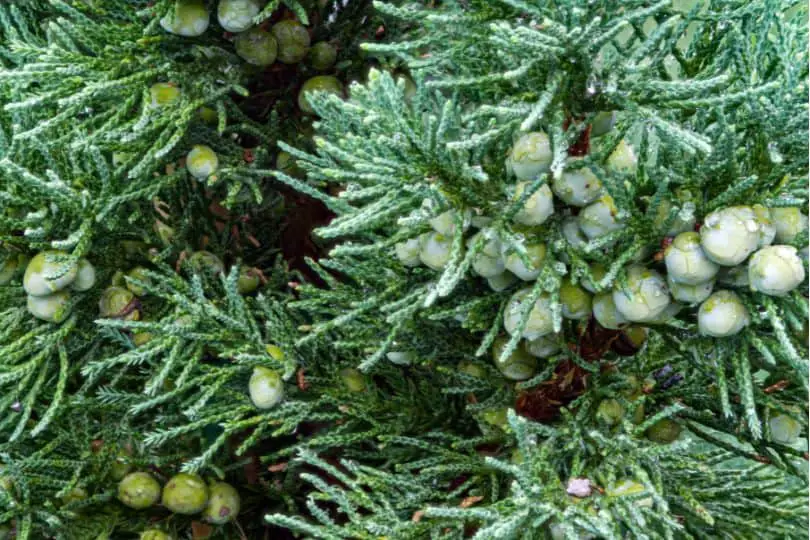
- Common Name: Eastern Redcedar
- Scientific Name: Juniperus virginiana
- Mature Height: 25-50 feet (7.5-15 meters)
- Native/Non-Native: Native
- Flowers/Cones: Dark blue cones with white powdery film
- Uses: Flavoring gin, making storage chests, lending scent to linens
The Eastern Redcedars are the most common cedar trees in Ohio. It is a pyramid-shaped tree with a single crooked or leaning trunk and can reach a height of 25-50 feet and has a pointed crown.
Its needle-like leaves are 1-2 inches long, scaly, and dark green. The bark of the Eastern Redcedar is reddish-brown to gray in color and peels into long narrow shreds as it ages. The bark is smooth and reddish below. The tree’s fall color is reddish-brown in the winter.
After a fire, it is generally the first tree to sprout back in grasslands or fields. It’s a slow-growing tree with cones that seem like blueberries but are actually cones. Many bird species consume the cones and disperse the seeds of the tree through their droppings.
Eastern Redcedar wood is lightweight and aromatic. It is frequently used to construct storage chests, where it scents the linens inside. Furthermore, the tree’s cones are utilized to flavor gin during the distillation process. Eastern Redcedar is also known as Red Juniper or Eastern Juniper.
The tree, on the other hand, is infected with cedar-apple rust, which generates huge jelly-like orange growths. Its extremely pointed leaves might irritate the skin slightly.
Early French colonists in Louisiana referred to the smooth crimson inner bark of the Eastern Redcedar as “baton rouge” or “red stick.” Overall, the Eastern Redcedar is a valuable natural tree with numerous applications and adaptations.
2. Eastern White Cedar
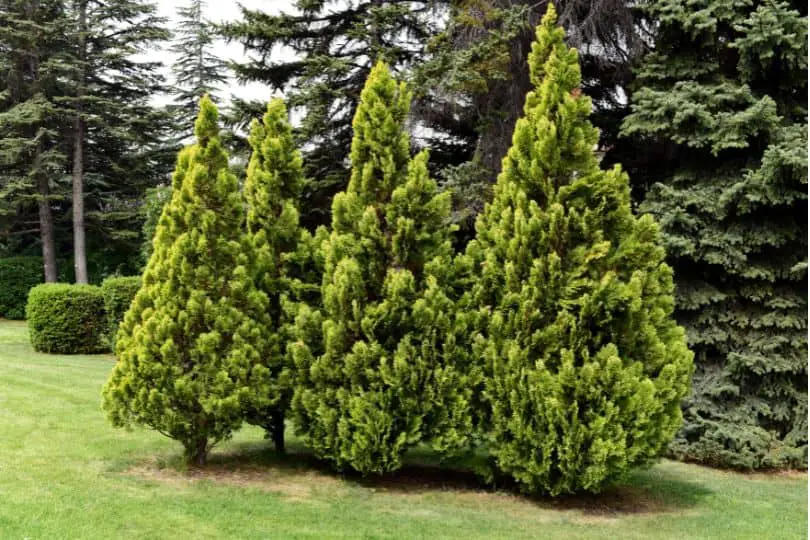
- Common Name: Eastern Whitecedar
- Scientific Name: Thuja occidentalis
- Mature Height: 30–50 feet (9–15 meters)
- Native/Non-Native: Native
- Flowers/Cones: Upright clusters of green to bluish-purple cones that mature to light brown
- Uses: Wood used for canoe frames, decorative woodwork, and fence posts, also used in traditional medicine and as a food source for deer
Despite being one of the native cedar trees in Ohio, the Eastern Whitecedar, is not as common as the red cedar that we discussed previously. It is a pyramid-shaped tree that can reach heights of 50 feet.
It has a single or numerous crooked trunks with delicate, scaly light green needles. The needles are scale-like and overlay one other, giving the tree a dense crown. The bark is dark and fibrous, peeling away in large pieces.
The Eastern Whitecedar is a North American native that can be found across Ohio, frequently in pure stands in moist or wet soils. It is a slow-growing tree with a lengthy lifespan, with some trees living for almost 700 years! Deer prefer it during the winter, and traditional medicine has used it to treat scurvy, which is a result of a lack of vitamin C.
Eastern Thuja and Eastern Arborvitae are other names for the tree. Because it is lightweight, it is ideal for canoe frames, decorative woodwork, and fence posts. The common name “Arborvitae,” which means “tree of life,” may have originated with French explorers who relied on the plant’s curative abilities to treat scurvy.
This tree was introduced into Europe around the mid-1500s and presently has over 100 different kinds. So the next time you see an Eastern Whitecedar tree, remember its significance in both North American and French history, as well as its practical utility.
Common Cedar Trees in Ohio – Frequently Asked Questions (FAQs)
Let’s go through some of the most commonly asked questions about common cedar trees in Ohio. These questions were taken from gardening threads and forums where beginner gardeners and plant enthusiasts usually hang out.
Are there cedar trees in Ohio?
There are two types of cedar trees in Ohio: Eastern Red Cedar and Eastern White Cedar. The most common type is the Eastern Red Cedar, a juniper native to the state known for its distinctive reddish-brown bark and small, bluish-green berries. Eastern Red Cedars can be found all over Ohio, especially in open fields, wooded areas, and along fence lines. They are hardy and adaptable trees that can tolerate a wide range of soil conditions, making them ideal for Ohio’s climate.
What are the uses of cedar trees in Ohio?
Cedar trees in Ohio, particularly the Eastern Red Cedar, have multiple uses. Their timber is extremely durable and resistant to decay, and it is frequently used in outdoor applications such as fences, decks, and siding, as well as indoor applications such as cabinetry and paneling.
Cedar trees are valued in landscaping for their natural beauty, serving as ornamental elements in gardens and providing windbreaks or privacy screens. They provide important wildlife habitats by providing nesting sites for birds, food sources in the form of berries, and cover for small mammals and deer. Because of their deep root systems, cedar trees also aid in erosion control, preventing soil erosion and sediment runoff.
Furthermore, the distinct aroma of cedar wood makes it desirable for aromatic purposes such as insect repellent in storage areas and as an ingredient in perfumes and soaps.
Cedar trees have cultural significance in traditional practices and ceremonies. To ensure the continued availability of cedar trees and to maintain ecological balance, sustainable management practices are essential.
Where are the most cedar trees in Ohio located?
Cedar trees, particularly the Eastern Red Cedar, can be found all over Ohio. They can be found in different parts of the state. However, there are some areas where cedar trees are more common. Eastern Red Cedars are common in open fields, wooded areas, and along fence lines. Cedar trees can also be found in parks, nature reserves, and along highways and roadways where they have been preserved for their ecological and aesthetic value.
Even though Eastern White Cedar (Thuja occidentalis) is native to Ohio, it is not commonly found growing there. Eastern White Cedar’s natural range extends from southeastern Canada to the northeastern United States, primarily in the Great Lakes region and the northeastern states. While Eastern White Cedar is occasionally planted for ornamental purposes in residential or commercial landscapes in Ohio, it is not commonly found in the state’s wild.
Similar Articles
- White Flowering Trees In Ohio
- Yellow Flowering Trees In Ohio
- Common Oak Trees In Ohio
- Common Willow Trees In Ohio
- Common Purple Trees In Ohio
- Common Pine Trees In Ohio
- Common Birch Trees In Ohio
- Common Ash Trees In Ohio
- Native Cherry Trees In Ohio
- Native Hickory Trees In Ohio
- Common Elm Trees In Ohio
- Common Spruce Trees In Ohio
- Common Poplar Trees In Ohio
- Common Nut Trees In Ohio
- Common Maple Trees In Ohio
- Native Aspen Trees In Ohio
- Native Plum Trees In Ohio
- Common Locust Trees In Ohio
- Common Palm Trees In Ohio
Sources
The Regional Gardening team makes sure that the information in our articles is accurate by only using sources that are known to be trustworthy. Some of these sources are peer-reviewed journals from government agencies, well-known universities, and scientific research organizations.
- Trees Of Ohio, Division Of Wildlife
- Trees Of Ohio Field Guide, Book by Stan Tekiela
- Ohio Trees, OSU Extension Publications
- Native Plant Lists, Ohio Department Of Natural Resources
- Ohio Department Of Agriculture
- Gardening, The Ohio State University


